
BASS 2023: This is an individual piece that was created by spreading india black ink on one side of a largemouth bass. I had the idea to create this because I was experimenting with what different objects could make interesting designs. I really appreciated how I could make something that was discarded, into art. I feel that this piece revitalizes things that are no longer needed or dead, and gives the fish another life. I finalized this 15x8 print in Adobe Photoshop, changing the hue of the image to green. 2024
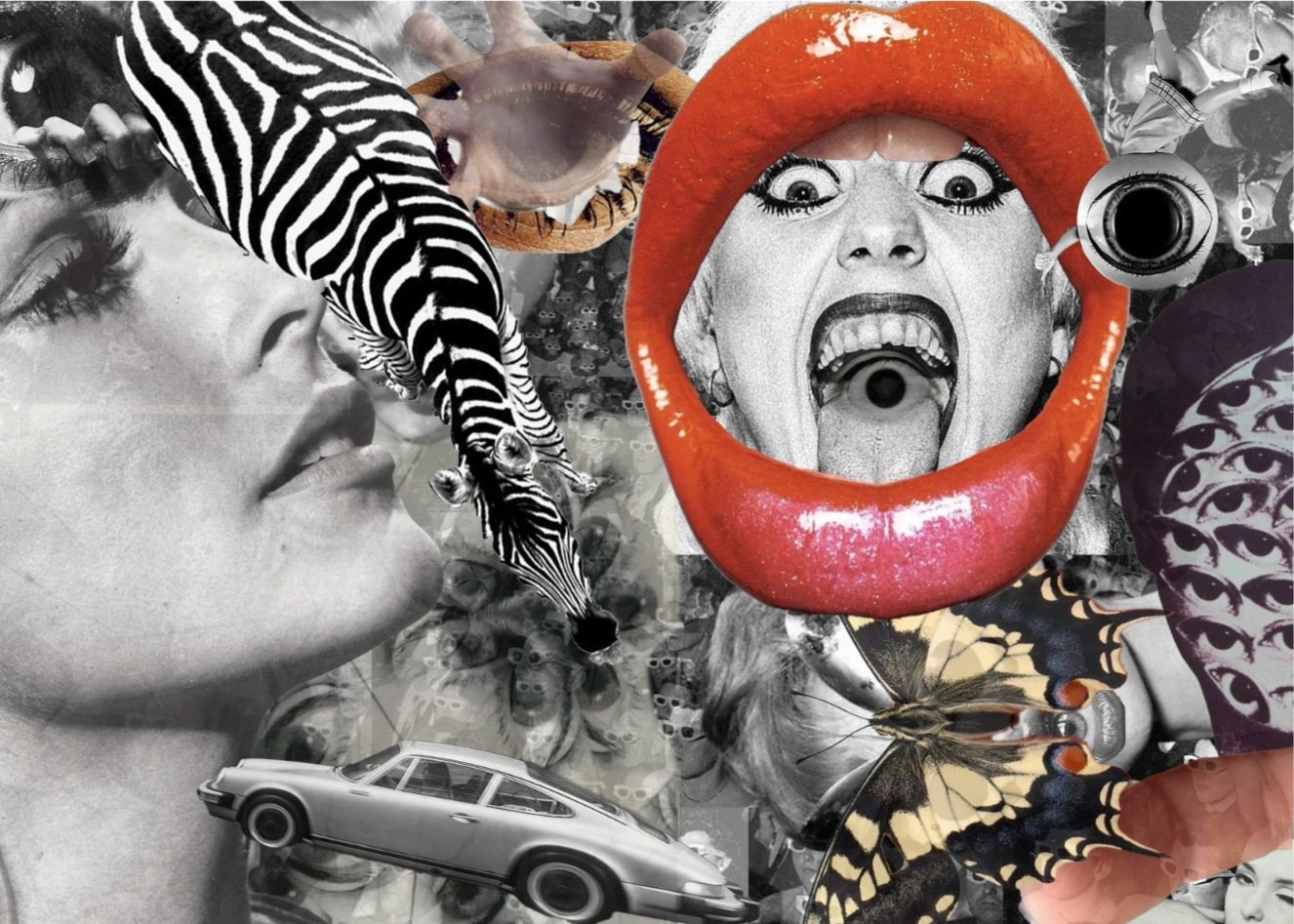
LOOKING 2024: This piece was made individually and is inspired by all things eyes. I was interested in using the eye itself but also testing what the eye is drawn to when looking at this collage. Eyes and faces have always inspired me when free-hand drawing and I wanted to express the same inspiration in a different form. This was made in Adobe Photoshop, 7x5.
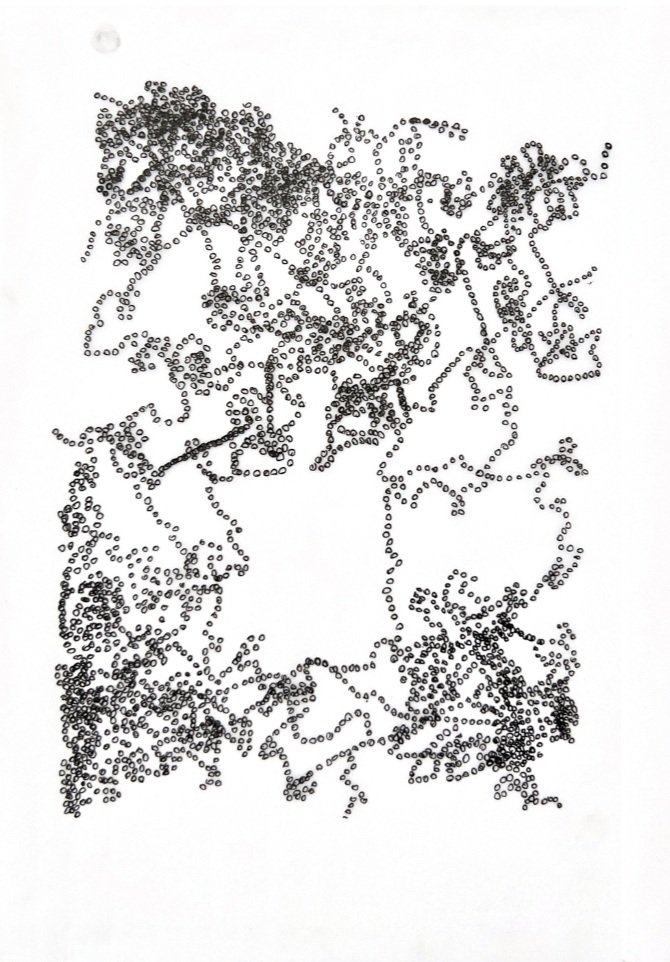
PATH OF A BUG 2024: These pieces were made during the summer program at the University of Southern California. These pieces were tracking a bug’s pathway in a courtyard. We started this assignment by drawing a plan for the courtyard and observing whether or not the designed pathways are used. I chose a bug because I thought it would be a fun experiment to make a pattern out of something so scattered and overlapped, unlike walking paths, for example. The bug's most popular spot was the corners where the trees and other plants were and the tables where students ate their lunch. This was made on trace paper, 15x20, on top of the courtyard plan using india ink and finalized in Adobe Photoshop.

THE ITCH 2024: This is an individual piece showing layers of fatigue, depression, and vulnerability when going through life’s most challenging moments. “The Itch” encases the feeling of when even being present is exhausting and overwhelming, yet you feel numb. I used Procreate to sketch and finalize this 15x20 piece and used the charcoal tool.
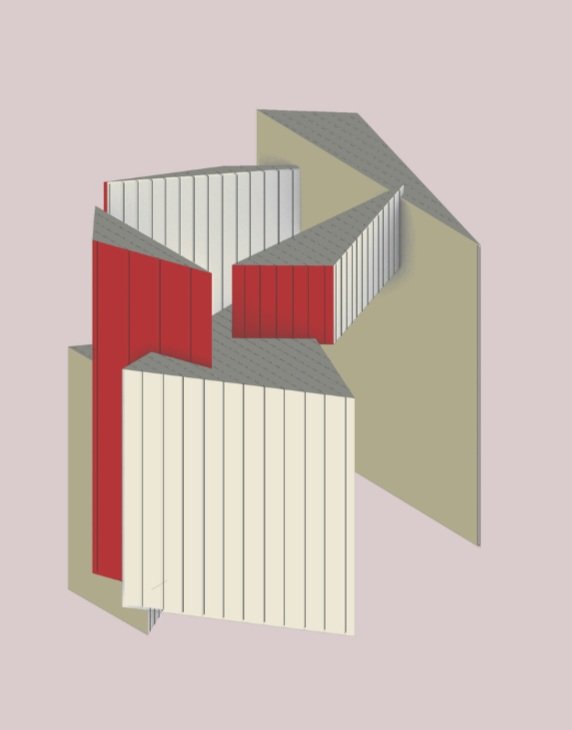
PROCESS OF THE PAVILION V1 2024: These pieces were made during the summer program at the University of Southern California. These pieces were a part of my process to my final pavilion. I created models of the original design in Rhino and then used Adobe Illustrator to create the coloring and background. I then decided I wanted to try again and restarted the process the created version two (bottom two). I decided to restart because I thought that I could make the design more dynamic while knowing that pavilions are one of the few things that can be designed with complete creative freedom and wanting to take advantage of that.

PROCESS OF THE PAVILION V1 2024: These pieces were made during the summer program at the University of Southern California. These pieces were a part of my process to my final pavilion. I created models of the original design in Rhino and then used Adobe Illustrator to create the coloring and background. I then decided I wanted to try again and restarted the process the created version two (bottom two). I decided to restart because I thought that I could make the design more dynamic while knowing that pavilions are one of the few things that can be designed with complete creative freedom and wanting to take advantage of that.

THE PAVILION 2024: This is my final pavilion, made during the summer program at the University of Southern California. To connect my pavilion to the existing architecture I positioned my model to grab on the side of the building with access from the stairs. I contrasted the exterior's sleek lines with the interior's multiple surfaces. I put a darker concrete-like color and texture on the exterior while highlighting the shaded areas with a lighter concrete texture. I used Rhino, Adobe Photoshop and Illustrator to create this piece.

THE PAVILION 2024: This is my final pavilion, made during the summer program at the University of Southern California. To connect my pavilion to the existing architecture I positioned my model to grab on the side of the building with access from the stairs. I contrasted the exterior's sleek lines with the interior's multiple surfaces. I put a darker concrete-like color and texture on the exterior while highlighting the shaded areas with a lighter concrete texture. I used Rhino, Adobe Photoshop and Illustrator to create this piece.

PROCESS OF THE PAVILION V2 2024: These pieces were made during the summer program at the University of Southern California. These pieces were a part of my process to my final pavilion. I created models of the original design in Rhino and then used Adobe Illustrator to create the coloring and background. I then decided I wanted to try again and restarted the process the created version two (bottom two). I decided to restart because I thought that I could make the design more dynamic while knowing that pavilions are one of the few things that can be designed with complete creative freedom and wanting to take advantage of that.
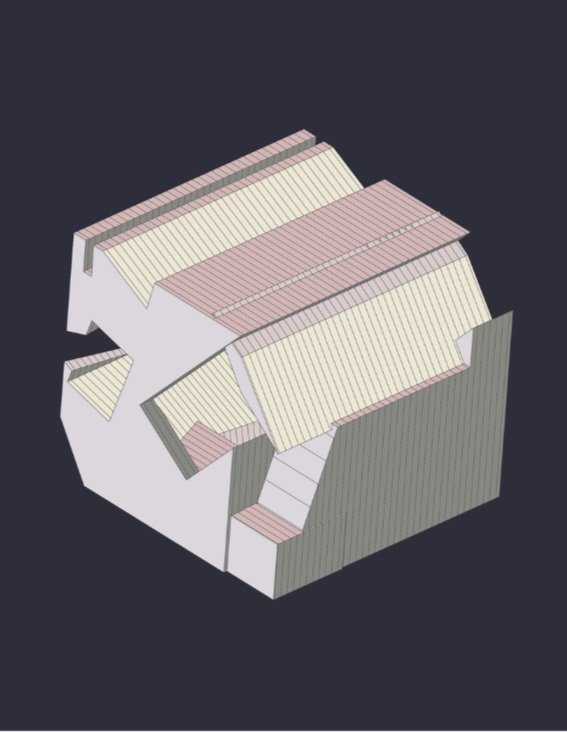
PROCESS OF THE PAVILION V2 2024: These pieces were made during the summer program at the University of Southern California. These pieces were a part of my process to my final pavilion. I created models of the original design in Rhino and then used Adobe Illustrator to create the coloring and background. I then decided I wanted to try again and restarted the process the created version two (bottom two). I decided to restart because I thought that I could make the design more dynamic while knowing that pavilions are one of the few things that can be designed with complete creative freedom and wanting to take advantage of that.
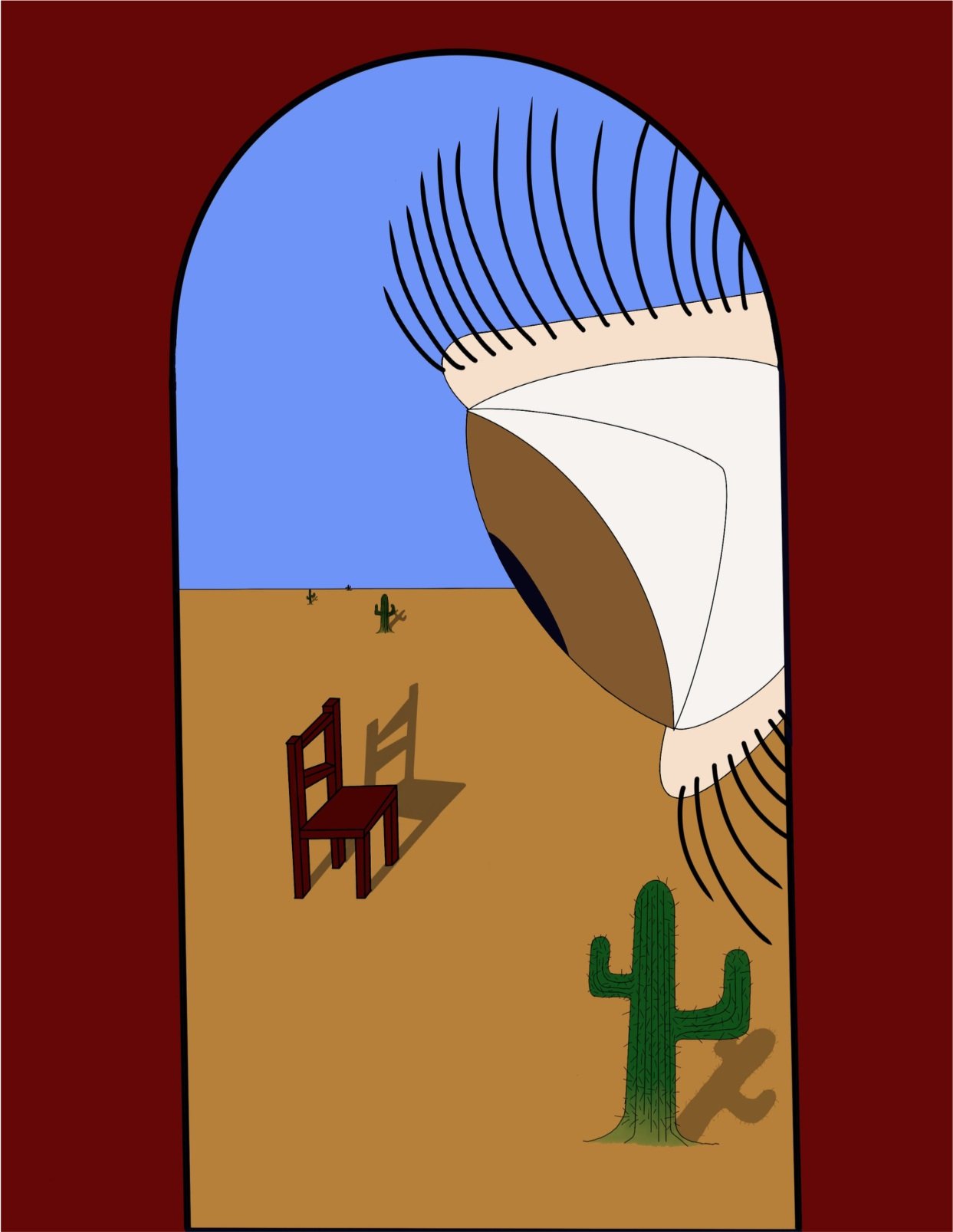
FIND ME 2024: This is an individual piece that was created out of the desire for deliberate simplicity. I tend to make things too complicated, so I wanted to challenge myself to make something captivating and mysterious with simplicity. I wanted nothing to make sense in this piece, to feel confusing and dream-like. I added the arch to mirror the perspective of the large eye gazing upon the lone chair to intensify the sense of observation through exaggerated perspective. I used Procreate to create this 15x20 piece and was inspired by the Cranberries album cover for Bury the Hatchet. 2024

THE BONE 2022: This piece was created during a drafting class in my sophomore year. We were instructed to make a shape using drafting techniques that were symmetrical. I chose the shape of a bone because I wanted to work with curves and incorporate circles while still being precise with my measurements. This piece was done on drafting paper, 18x24, with a 4B and 6H charcoal pencil.
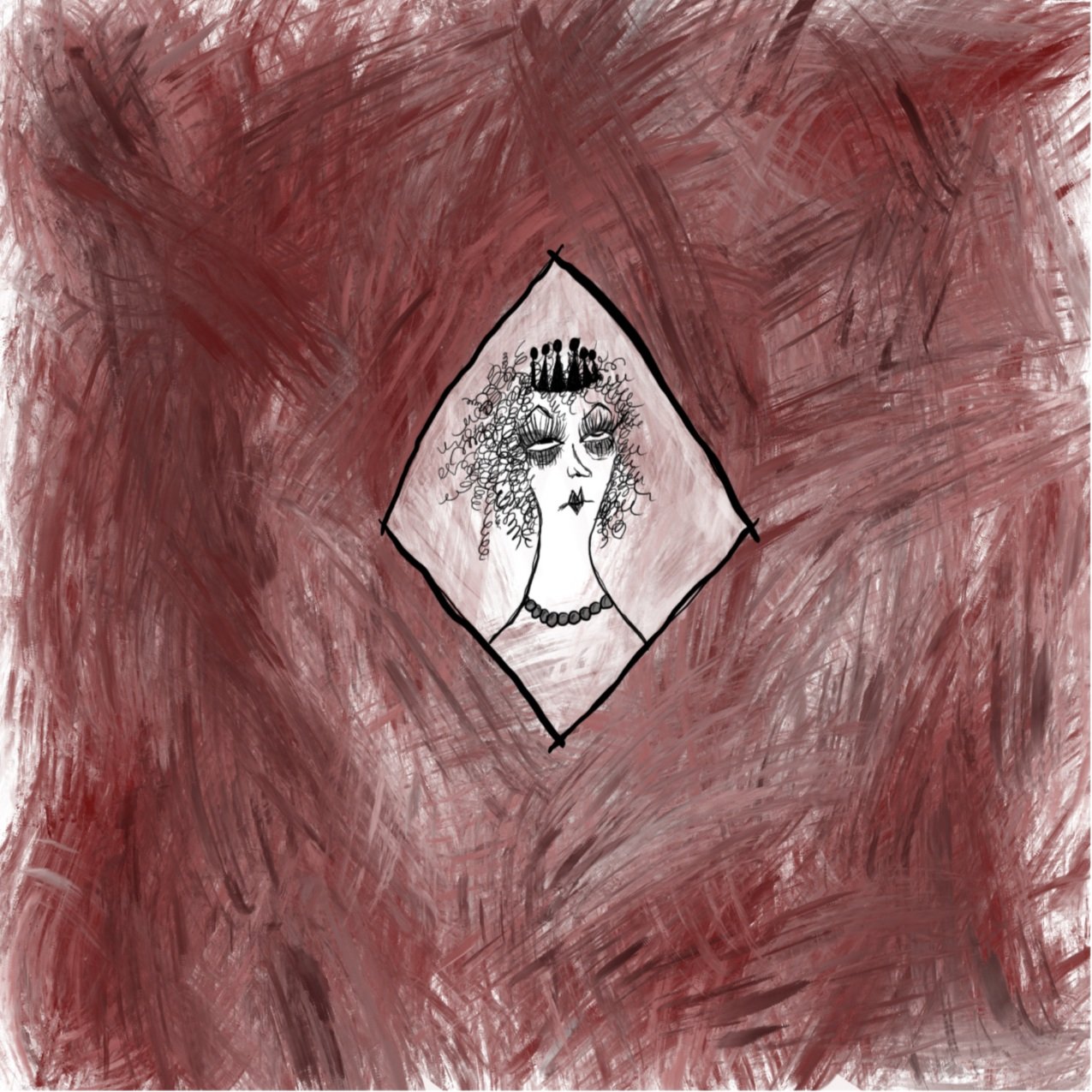
PORTRAIT OF UNSETTLED 2024: This is an individual piece that was inspired by portraits. I designed this piece with the background as my focus, making it chaotic with red earthy tones while contrasting it with the portrait, which is delicate with exaggerated and surrealistic features. I wanted this contrast to show the cohesiveness of something that is beautiful but also unsettling. The chaos expresses the tension of one’s actions in public versus private. I used Procreate to create this 15x15 piece using the pen and dry acrylic brush tools.
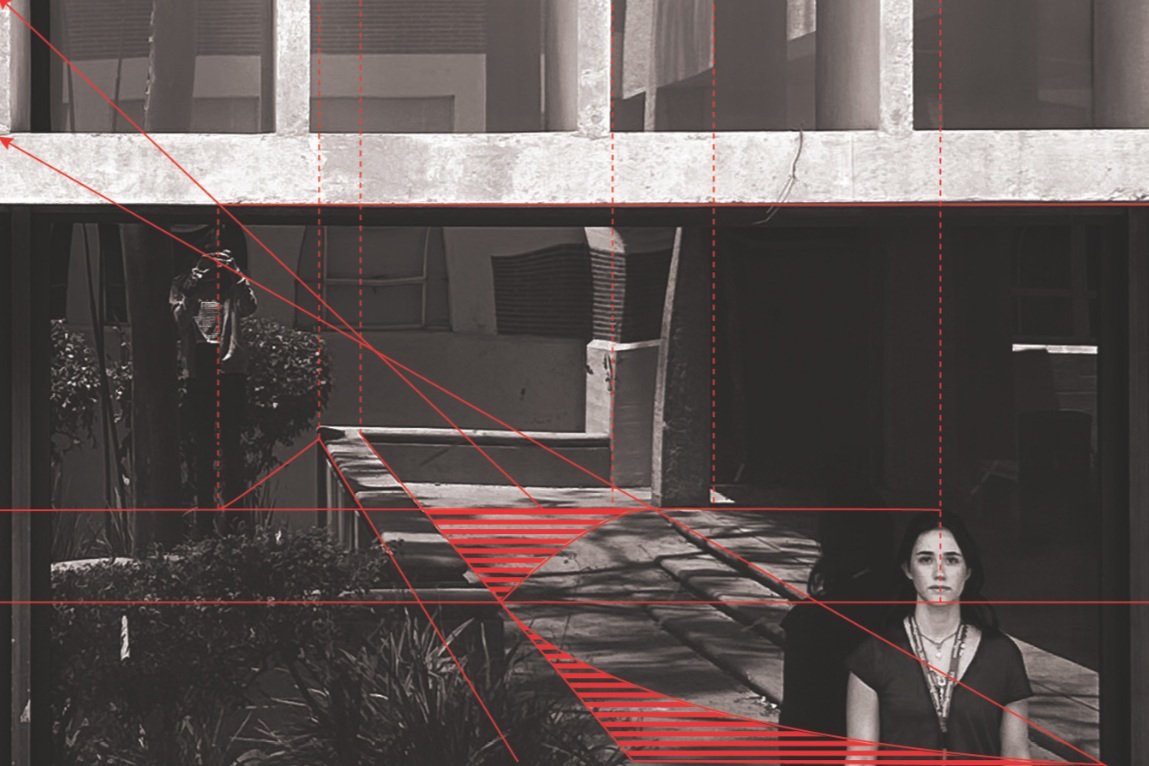
PART TO WHOLE 2024: These pieces were made during the summer program at the University of Southern California. I took a picture of a specific spot in a courtyard and connected pieces of architecture and reflections to one design. I used her face as my proportion and aimed to make the design work on top of the picture to look 3d and utilize the reflection to do so. I used my phone camera and Adobe Illustrator and Photoshop.

PART TO WHOLE 2024: These pieces were made during the summer program at the University of Southern California. I took a picture of a specific spot in a courtyard and connected pieces of architecture and reflections to one design. I used her face as my proportion and aimed to make the design work on top of the picture to look 3d and utilize the reflection to do so. I used my phone camera and Adobe Illustrator and Photoshop.
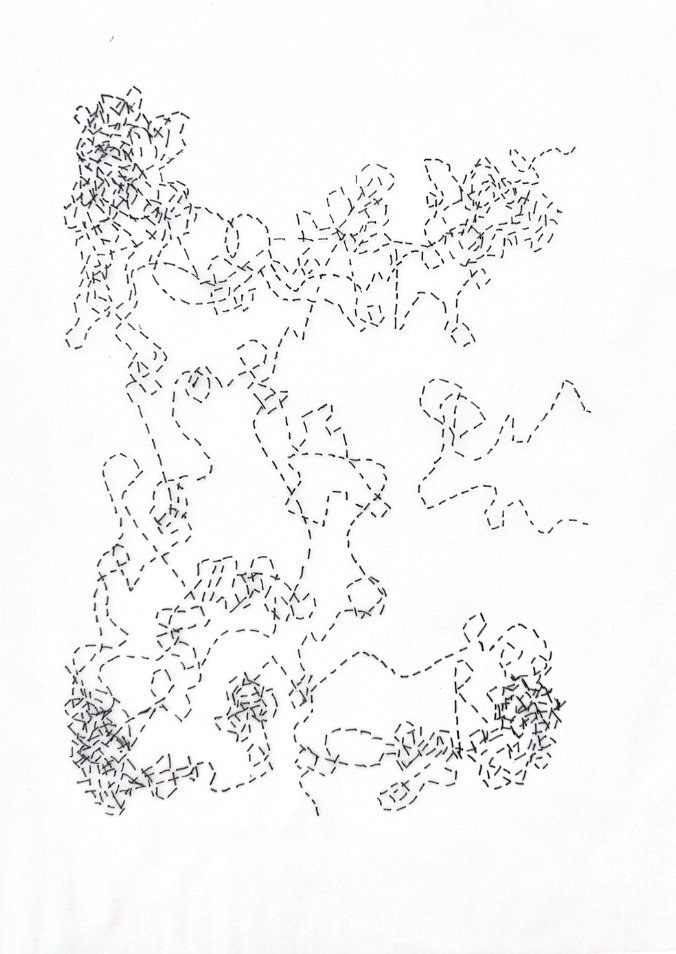
PATH OF A BUG 2024: These pieces were made during the summer program at the University of Southern California. These pieces were tracking a bug’s pathway in a courtyard. We started this assignment by drawing a plan for the courtyard and observing whether or not the designed pathways are used. I chose a bug because I thought it would be a fun experiment to make a pattern out of something so scattered and overlapped, unlike walking paths, for example. The bug's most popular spot was the corners where the trees and other plants were and the tables where students ate their lunch. This was made on trace paper, 15x20, on top of the courtyard plan using india ink and finalized in Adobe Photoshop.